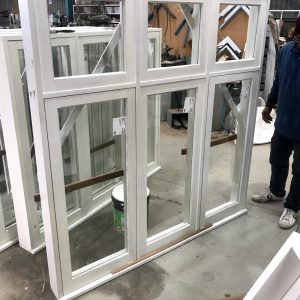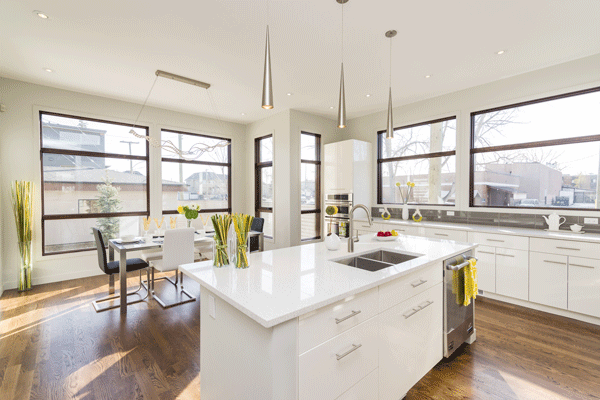It is nearly hard to prevent noise pollution when living in an urban area. However, you may bring silence back into your house by installing sound proofing materials and learning how to sound proofing windows. You can learn everything you need to know about how to lessen noise pollution in your house from our comprehensive guide on soundproofing windows. We intend to address all of your concerns, from how we define noise pollution to how acoustic windows function and how house sound proofing windows are placed.
HOW TO SOUND PROOFING WINDOWS
The best technique to soundproof windows is to use double glazing or extra layers of glass. Window plugs, seals, storm windows, and soundproof drapes are affordable substitutes.
- Double Glazing
- Add a Second Layer on Top of the Glass
- Construct a Window Plug
- Install Sound Proof Curtains
- Close Off Air Holes
- Install Storm Windows
- Place a Quilted Fiberglass Panel in place
1. DOUBLE GLAZING
The best insulation is provided by double glazing, but the price is the biggest drawback. Two panes of glass are installed in the window frames of double-glazed windows with a 12 to 16 mm gap between them.
The gap in between the frames and panes is sealed to make it airtight, and also serves as a particularly efficient region for insulation.
2. ADD A SECOND LAYER ON TOP OF THE GLASS
The glass of your current windows can also be covered with an acrylic sheet as an additional layer of protection. Since there is less of an air gap between the layers, the method isn’t quite as good as storm windows, but it is still reasonably effective and much simpler and less expensive.
Make sure the sheet of plexiglass you purchase is thick enough. Sound proofing won’t be very effective with thin plexiglass. However, avoid going too thick, as that will make the sheet excessively heavy. Moreover, utilize acrylic made for windows. Sunlight exposure won’t cause something to fade or change color.
3. CONSTRUCT A WINDOW PLUG
The solution to the window noise issue is by far this. Window plugs are incredibly effective, cheap to make, and simple to construct. They function by adding layers of acoustic foam, sound proofing matting, and wood to the area in front of your windows. Sound waves entering from the front are absorbed by the foam. The mat and the wood backing board prevent any noise that passes through the foam. The wood’s rear surface has handles attached for convenient installation and removal.
The benefit of plugs is that they are temporary. They can be inserted when necessary and removed when not. And that’s fortunate because they do have some serious drawbacks. They don’t look particularly nice, either from inside the house or from the outside, to start with. They also completely block incoming light. You won’t have the chance to take out the plugs if your noise issue persists, which means you won’t be able to take advantage of the day’s natural sunshine. Of course, the light-blocking capabilities of the plugs could be advantageous if you reside in a location with a lot of nighttime light pollution.
4. INSTALL SOUND PROOF CURTAINS
Similar to a window plug, installing sound proofing curtains is not too difficult if you already have curtain rods. They are more beautiful than a wood-backed window plug since they are fabric drapes. They aren’t quite as good at reducing unwanted sound, though. While a window plug can prevent and absorb sound, curtains can only absorb it. The density of the fabric, the thickness of the curtains, and if an inner liner is there to provide additional layering and thickness all affect how absorbent they are.
5. CLOSE OFF AIR HOLES
Look to check if there are any sizable air spaces around your windows that are letting sound in if you have respectable double or triple-paned windows but are still hearing excessive outside noise. You should momentarily remove the window trim to properly complete this. You will be able to access the exterior of your window frames thanks to this.
Use a good acoustic sealant to fill in any cracks, holes, or gaps. Specially formulated polymers known as acoustic sealants are used to plug gaps and stop sound waves from traveling through the open atmosphere.
6. INSTALL STORM WINDOWS
Installing storm windows in front of your wood windows, especially older, single-pane windows, will improve their ability to muffle noise and would make your sound proofing more effective. The air space between the two windows and the additional layer of glass act as additional barriers to sound transmission.
This is a more expensive fix than some of the other options on this list and might be beyond the skills of some homeowners, but the addition can be a valuable noise-reduction measure. You might think about getting in touch with a contractor and receiving a price if your issues are bad enough. However, competent DIYers and the brave can undoubtedly complete the task.
7. PLACE A QUILTED FIBERGLASS PANEL IN PLACE
The more solid and thick the material you use, the better it will be at reducing outside noise. The curtains are not very thick. Quilted fiberglass panels are substantially thicker and more dense. Over twelve pounds are contained on a panel that is four feet broad by eight feet tall and two inches thick!

The panel’s weight is excellent because, when hung with hooks from above, it tends to lay flat on a window frame. This resolves another issue with curtains. Where the curtain folds don’t adhere tightly to the window, at the top and bottom, they have a tendency to let sound in. The eyelet holes on the panels are reinforced with metal. Heavy-duty hooks can be installed around your window frame and inserted into the eyelets to hang the panel. You can use sturdy velcro to affix the panels’ edges to increase their effectiveness even further. This creates a tight seal around the window’s exterior, allowing even less sound to enter.
CONTACT US!

